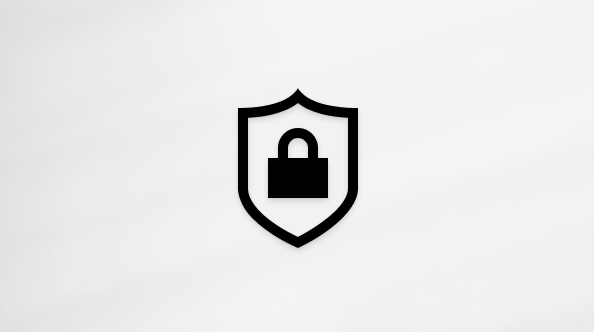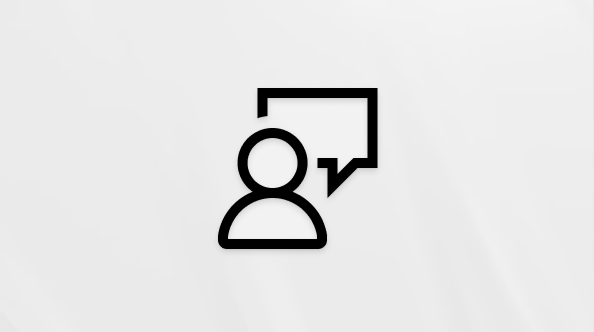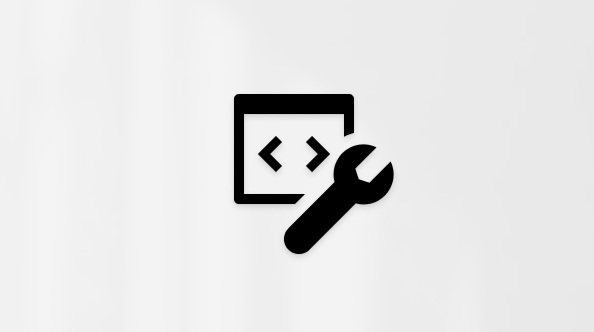Ways to install Windows 11
Applies To
Important: Updated February 04, 2025 This support article was originally published on September 30, 2021, when Windows 11 was first released to the public. At the time of publication and still today, the intention behind this support page is to detail ways of installing Windows 11 on devices that meet system requirements for Windows 11. If you installed Windows 11 on a device not meeting Windows 11 system requirements, Microsoft recommends you roll back to Windows 10 immediately. Windows 11 minimum system requirements remain unchanged and can be found in the article Windows 11 specs, features, and computer requirements.
Before installing Windows 11, make sure the device where Windows 11 is being installed meets the minimum system requirements. If the device is currently running Windows 10, Microsoft recommends verifying the minimum system requirements using the PC Health Check app. It isn't recommended to install Windows 11 on a device that doesn't meet requirements. For more information, see Installing Windows 11 on devices that don't meet minimum system requirements.
Recommended method to install Windows 11
If upgrading from Windows 10 to Windows 11, Microsoft recommends waiting until Windows Update notifies that the upgrade is ready for the device. To check if Windows 11 is ready for a device using Windows Update, follow these steps:
-
Select Start and then select Settings > Update & Security > Windows Update . Or Select the following Windows Update shortcut:
-
In the Windows Update window that opens, select the Check for updates button.
Note: If there are updates available for the current version of Windows, the Windows 11 upgrade might not be made available until those updates are installed. Install any updates for the current version of Windows, restart the device, and then try checking for the Windows 11 upgrade again.
-
If Windows 11 is ready to be installed on the device, a message is displayed in the Windows Update window showing that Windows 11 is ready. Select the Download and install button to start the Windows 11 upgrade.
-
In the Software License Terms window that opens, select the Accept and install button.
-
The Windows Update window refreshes and Status: shows the progress of the Windows 11 upgrade downloading and installing.
-
Once the installation portion of the Windows 11 upgrade is done in Windows 10:
-
The Windows Update window refreshes and changes to Restart required. The Status: also updates to Pending restart.
-
A Windows Update notification is displayed in the notification area with the message Restart to install the newest Windows feature update.
To continue the Windows 11 upgrade, restart the device by selecting the Restart now button in the Windows Update window or Restart now in the Windows Update notification.
-
-
The device restarts and the Windows 11 upgrade process continues. The device restarts automatically a few more times to finish installing Windows 11.
-
The Windows sign-on screen is displayed once the Windows 11 upgrade is done. Sign into the device to complete the upgrade.
If a message isn't displayed in the Windows Update window that Windows 11 is ready, it could be for one of the following reasons:
-
The device meets the hardware requirements for Windows 11, but the Windows 11 upgrade isn't ready to install yet.
-
The device meets the hardware requirements for Windows 11, but there might be a known compatibility issue with the device and Windows 11. The Windows 11 upgrade is eventually offered if the compatibility issue is resolved. For more information, see The notification "What needs your attention" displays during a Windows upgrade.
-
The device doesn't meet the hardware requirements for Windows 11. To check the device's Windows 11 hardware compatibility, use the PC Health Check app available at the following link:How to use the PC Health Check app
The Windows Update window might also instead display the following message:
-
Get ready for Windows 11 To see if this PC can run Windows 11, check the hardware requirements or visit your PC manufacturer' website.
The link Check hardware requirements from this message doesn't check the Windows 11 hardware compatibility for the device, but instead opens the page Find Windows 11 specs, features, and computer requirements. To manually check if the device meets the minimum hardware requirements, use the PC Health Check available at the following link:How to use the PC Health Check app
Other methods to install Windows 11
The Windows 11 Installation Assistant is an app that provides assistance with upgrading to Windows 11. Microsoft recommends waiting until a device is offered the Windows 11 upgrade via Windows Update before using the Windows 11 Installation Assistant app. However, the Windows 11 Installation Assistance app can be used before Windows Update offers the Windows 11 upgrade.
The Windows 11 Installation Assistance can be downloaded from the following link:Windows 11 Installation Assistant
When the Windows 11 Installation Assistant is run, one of the following options is displayed in the Windows 11 Installation Assistant window:
-
Install Windows 11 - If the Windows 11 Installation Assistant determines that the device meets the hardware requirements for Windows 11, it offers to install it. To proceed with the install, in the Windows 11 Installation Assistant window:
-
Select the Accept and install button to start the upgrade to Windows 11.
-
When the Windows 11 upgrade process prompts to restart, select the Restart now button.
-
The device restarts and the Windows 11 upgrade process continues. The device restarts automatically a few more times to finish installing Windows 11.
-
The Windows sign-on screen is displayed once the Windows 11 upgrade is done. Sign into the device to complete the upgrade.
-
-
Use the PC Health Check app to check compatibility - The Windows 11 Installation Assistant needs more information to determine if the device meets the hardware requirements for Windows 11. Run the PC Health Check app to check if the device meets the minimum hardware requirements. For more information, see How to use the PC Health Check app. After running the PC Health Check app, select the Refresh button in the Windows 11 Installation Assistant window to update status. The updated status should show if Windows 11 is available for install or if the device doesn't meet the minimum hardware requirements to install Windows 11.
-
This PC doesn't meet the minimum system requirements to install Windows 11 - The device doesn't meet the hardware requirements to upgrade to Windows 11. Microsoft recommends leaving the device on Windows 10.
Support for Windows 10 has ended on October 14, 2025
After October 14, 2025, Microsoft will no longer provide free software updates from Windows Update, technical assistance, or security fixes for Windows 10. Your PC will still work, but we recommend moving to Windows 11.
The Windows 11 installation media is an alternate method of installing Windows 11. Installation media is normally used to install Windows 11 on a device that doesn't already have Windows installed on it. However, it can also be used to upgrade existing installations of Windows to Windows 11.
For details on where to obtain the Windows 11 installation media and how to create it, see the article Create installation media for Windows.
Once the installation media is created, it can be used to upgrade an existing installation of Windows to Windows 11 using one of the following two methods:
-
Run the installation media in the current version of Windows.
-
Boot from the installation media to install a fresh copy of Windows 11.
Run the installation media in the current version of Windows
Windows 11 installation media can be used in the current version of Windows, for example Windows 10, to upgrade to Windows 11:
-
Sign into Windows on the device being upgrade to Windows 11.
-
Insert the Windows 11 installation media into the Windows device. For example, if the Windows 11 installation media was created on a USB flash drive, attach the USB flash drive to the Windows device.
-
A pop-up notification window should appear asking what to do with the inserted media. Select Run setup.exe.
If a pop-up notification doesn't appear:
-
Right-click on the Start menu and then select File Explorer .
-
When File Explorer opens, in the navigation bar, select This PC.
-
In the results pane under Devices and drives, right-click on the Windows 11 installation media and select Install or run program from your media.
Note: If the User Account Control window appears, select the Yes button. If the User Account Control window asks for an admin user name and password, enter a user name and password of an account that has administrator privileges. Once the user name and password are entered, select the Yes button.
-
-
The Windows 11 Setup window opens. Step through the Windows 11 Setup pages, following instructions at each step.
-
At the Ready to install page, the default is to Keep personal files and apps. However, selecting the Change what to keep link gives the following options:
-
Keep personal files and apps - Personal files, apps, and Windows settings are all kept and migrated to the new Windows 11 install. This option is the default option.
-
Keep personal files only - Personal files are kept and migrated to the new Windows 11 install, but apps and Windows settings are deleted.
-
Nothing - Everything is deleted, including personal files, apps, and Windows settings. If this option is selected and personal files are needed, they should first be backed up, for example to OneDrive or an external backup device.
Select the desired option or accept the default of Keep personal files and apps. To start the upgrade, finish stepping through the Windows 11 Setup pages.
-
-
The device is upgraded to Windows 11.
Boot from the installation media to install a fresh copy of Windows 11
Windows 11 installation media can be booted from on an existing Windows device to upgrade to Windows 11:
Warning:
-
This method completely wipes the contents of the hard drive and the existing installation of Windows and installs a fresh copy of Windows 11. All files and installed apps on the device are lost. Make sure that any necessary files are backed up before proceeding, for example to OneDrive or to an external backup device.
-
Although this method does check to make sure the device meets some of the minimum system requirements for Windows 11, upgrading without checking a system's eligibility via PC Health Check app or Windows Update could leave a system in an unsupported state. Microsoft recommends running the PC Health App in the current installation of Windows to verify that the device meets all requirements to run Windows 11. Running the PC Health App should be done before attempting to use the installation media to install a fresh copy of Windows 11. For more information on how to use the PC Health App to check if the device meets the minimum requirements for Windows 11, see How to check if your device meets Windows 11 system requirements after changing device hardware.
-
In the current installation of Windows, run the via PC Health Check app to verify that the device meets the minimum system requirements for Windows 11. Once the minimum system requirements for Windows 11 have been verified, shut down the device.
-
Insert the Windows 11 installation media into the Windows device. For example, if the Windows 11 installation media was created on a USB flash drive, attach the USB flash drive to the Windows device.
-
Turn on the device that is being upgraded to Windows 11 and then initiate the device's boot menu. The boot menu is initiated by selecting an appropriate key on the keyboard when the device first boots. This key varies by device manufacturer and model but is usually one of the function keys (F1 - F12) at the top of the keyboard or the DEL key. For more information, see the device's documentation or the device manufacturer's website.
-
From the device's boot menu, select the Windows 11 installation media.
-
Once the device boots from the Windows 11 installation media, the Windows 11 Setup window appears. Step through the Windows 11 Setup and follow the on-screen instructions.
-
The device is upgraded to Windows 11 and a fresh copy of Windows is installed.










